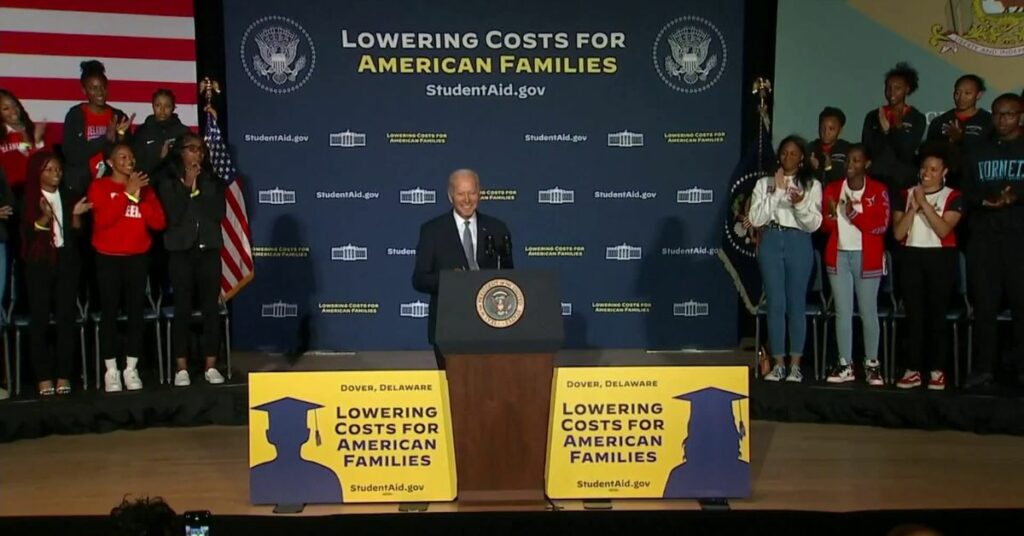If the Supreme Court decides to invalidate President Joe Biden’s plan to cancel student loans, it will be more devastating for some individuals and communities than for others. This is due to the fact that certain groups have been impacted particularly hard by the school debt issue, which currently stands at $1.7 trillion.
Since Vice President Biden announced his plan to forgive up to $20,000 in student loans for tens of millions of Americans, Republicans and conservative groups have filed at least six lawsuits to stop the policy. They argue that it’s an overreach of executive authority and unfair in a number of different ways, and they want it stopped.
The Supreme Court has consented to make the ultimate decision regarding the plan proposed by the president, and it will begin taking oral arguments on the matter in February. The following individuals stand to lose the most if the court invalidates the insurance policy and the debt is not forgiven:
Persons With Low And Moderate Economic Means
An estimate by the White House found that individuals with annual incomes of less than $75,000 would be eligible to receive 87% of the money that would be forgiven due to the plan.
Meanwhile, an annual income of more than $125,000 would be wholly disqualified from receiving the benefit. Those eligible for the maximum amount of debt forgiveness under the president’s plan — $20,000 – got a Pell Grant while they were attending college, indicating that their families had a modest income. According to Mark Kantrowitz, an expert in higher education, most scholarship recipients come from families with annual revenues of less than $60,000.
Andre Perry, a senior scholar at Brookings Metro, was recently interviewed on a podcast produced by the Brookings Institution called The Current. During the interview, Mr. Perry stated that “this approach truly helps low-income people across the board.”
People Of Different Colors
One of the primary contributors to the widening income gap between different racial groups in the United States today is said to be the student debt crisis. According to the Federal Reserve Bank of St. Louis, as of the second quarter of 2022, black families had wealth equivalent to 25 cents for every dollar of wealth held by white families.
According to a survey by the Brookings Institution, black college graduates have an average debt of $7,400 higher than their white colleagues. And the imbalance is just going to get worse with the passage of time: The average debt load for a white college graduate is roughly $28,000, while the average debt load for a black college graduate is over $52,000 four years after graduation.
In a recent interview with Politico, Wisdom Cole, the national director of the youth and college division of the NAACP, stated that if student loan forgiveness is not enacted, it “would be an atrocity for borrowers all across the nation and harm Black borrowers at a larger degree.”
Women
Since women are responsible for two-thirds of the outstanding student debt in the country, it was generally agreed that women would benefit the most from Vice President Biden’s plan to forgive student loans.
Research conducted by the Education Data Initiative discovered that female student borrowers have an average debt that is almost ten percent higher than their male classmates one year after graduation. Additionally, due to the continued gender pay gap, it takes female student borrowers an average of two additional years to pay off their student loans than it does for male student borrowers. According to Kantrowitz, “women will be the most affected if we cannot cancel student loans.”
Older Americans
As a result of the fact that more people are going back to school at a later age and the fact that the burden of student debt has become more onerous and, as a result, more difficult to pay off, an increasing number of people are continuing to carry student loan debt into their 50s, 60s, and even beyond.
According to the AARP, in 1989, just 3% of families led by someone 50 or over carried student loan debt, and the average balance of those loans was under $10,000. By 2016, approximately 10% of these older households still had unpaid balances on their student loans, and the mean amount outstanding had increased to more than $33,000.
As a consequence, the problem of student debt for older Americans is likely only to worsen if the cancellation is not implemented, according to the opinions of several experts.
I think you’ll enjoy reading our content. If so, we’d love to hear your insights in the space provided below. To stay on top of these developments, bookmark Journalistpr.com.

